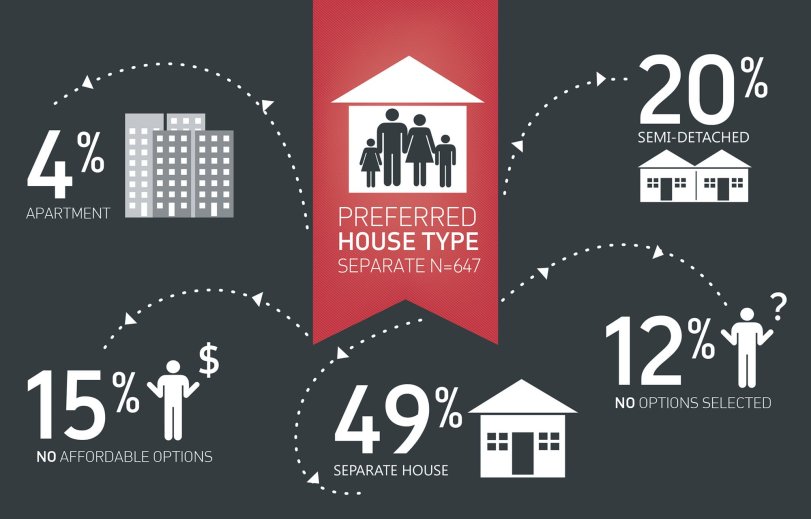The Housing We’d Choose: a study for Perth and Peel is an independent report which surveyed more than 2,000 people over a six month period about what matters most to them in terms of housing and was officially launched on 31 May 2013.

The study took 12 months to complete and was sponsored by the Department’s of Planning and Housing in WA and the Property Council of Australia and prepared by Hames Sharley and Curtin Business School. The study was based on the 2011 Grattan Institute report for Melbourne and Sydney and looked into the Perth housing preferences and decision-making process.
Hames Sharley Associate Director, Arun Broadhurst, says the information collated will help guide the property market, development industry and local government understand which housing types are: in demand; by whom and why; and how this is likely to influence the future growth and sustainability of communities around the Perth.
“The results of the survey reflected a maturing house market in Perth and the transformation of the city in line with other major Australian centres, however, the transformation is gradual with many still favouring the option of owning a separate house,” Mr Broadhurst says.
“What’s helping the shift is that even though there is a preference for separate housing, people are prepared to make significant trade-offs in location, house type, and size to realise their dreams of owning a home, however, there is still a long way to go in changing the mindsets of people in Perth.”
“We need to pave the way for a new breed of higher density dwellers who see the benefits of housing alternatives to the quarter acre block and who want to live the inner city lifestyle. We need research to inform innovation and through this study, we have the ability to begin to understand where people are trading off in the decision-making process.”
The research for the housing study was undertaken in three stages with the first comprising of six focus groups being held to determine which housing attributes mattered most to people when selecting a home. Two online surveys followed where participants were required to provide answers based on two different scenarios; firstly decisions on housing attributes without the constraints of income and in the second survey decisions were limited to housing preferences within the households’ means.
The outcomes of the report are in line with the extensive work that has been carried out in Directions 2031 and Beyond and Activity Centres policies. It also supports the work to encourage medium density developments under the State Affordable Housing Strategy 2010 – 2020, as part of government’s target to deliver 20,000 more affordable housing opportunities by 2020.
The Housing We’d Choose: a study for Perth and Peel marks the beginning of an important conversation about Perth’s future. Both government and the development industry now have a much better understanding of the real-life choices that Perth residents are prepared to make when deciding the location, size and type of house that they want to live in. The collective challenge is to deliver housing that responds to these choices.
Housing statistics sourced from the Perth Housing We’d Choose Study:
- 79% of Perth respondents would prefer to live in detached housing
- 75% nominated location as the key driving factor behind their housing choice
- 44 percent of people indicated that a three bedroom house is the smallest property that they were prepared to purchase, which increased to 46 percent when affordability and location were taken into consideration.
- Apartments were the least popular housing option (chosen by fewer than 10 percent of those surveyed), many of the concerns raised related to apartment design, such as noise transmission. However, people were far more prepared to rent an apartment rather than being long-term owner-occupiers.